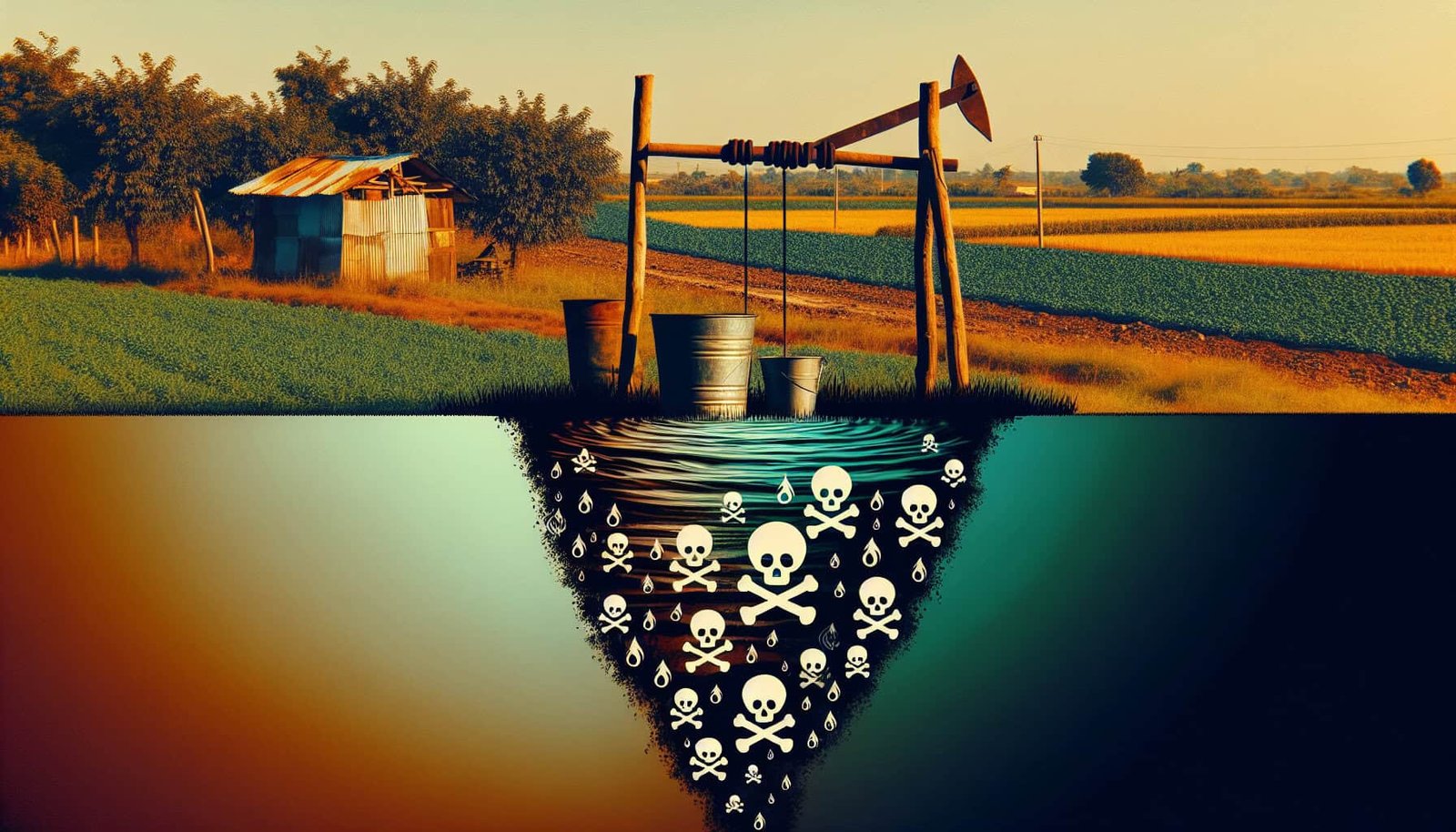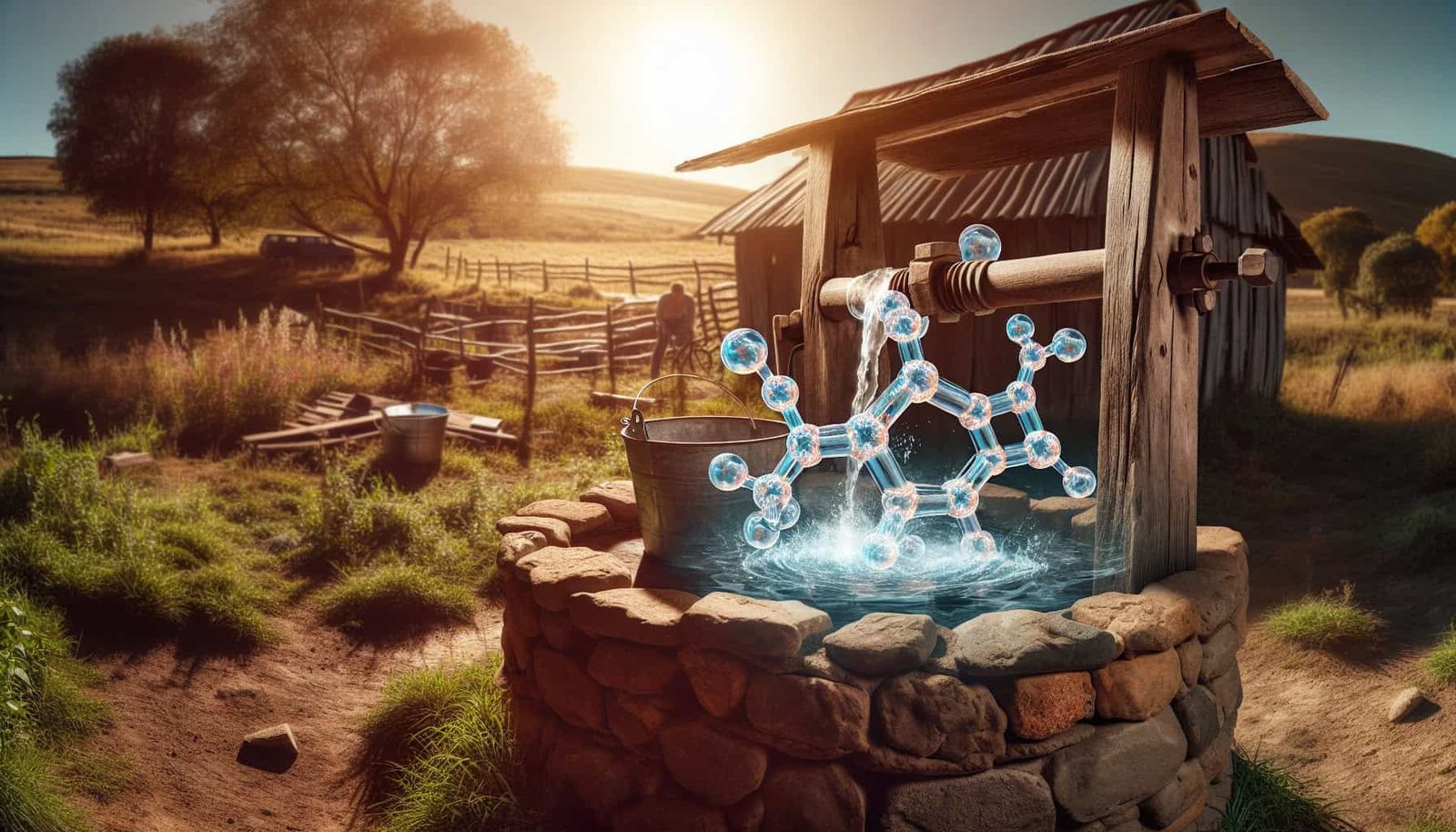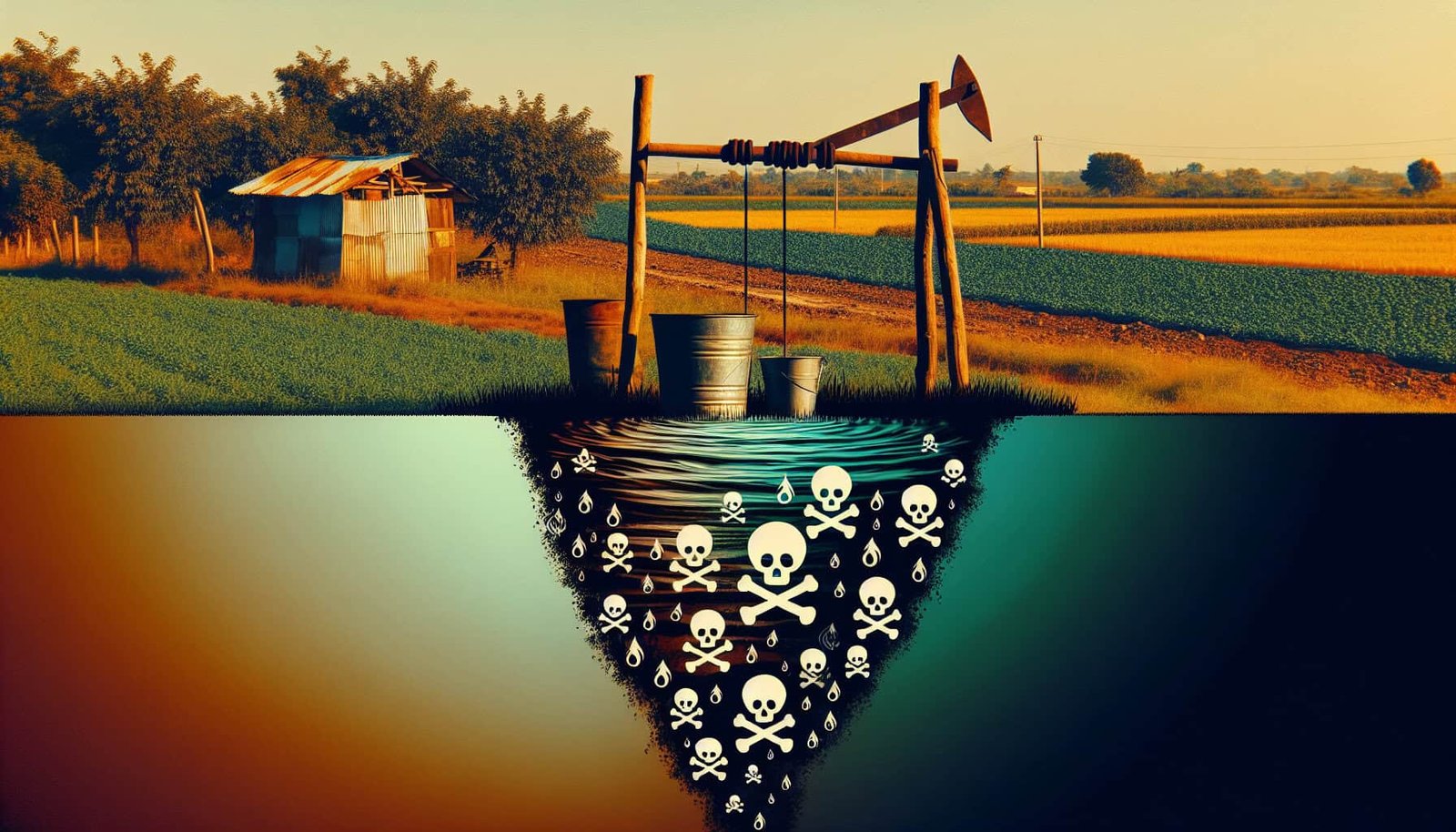Have you ever wondered if there are any guidelines for well water that contains high levels of ethylene dibromide (EDB)? Ethylene dibromide, a harmful chemical once used as a pesticide, has raised concerns among those who rely on well water for their daily needs. This article will explore whether there are any established guidelines to address this issue and provide you with valuable insights on how to ensure the safety of your well water. So, let’s dive in and discover what measures can be taken to safeguard your health in the face of EDB contamination.

Understanding Ethylene Dibromide (EDB)
What is Ethylene Dibromide (EDB)?
Ethylene Dibromide (EDB) is a colorless liquid with a sweet odor that easily evaporates into the air. It is primarily used as a pesticide, fumigant, and a lead scavenger in aviation fuel. Due to its harmful effects on human health, EDB has been banned for most uses in the United States since 1984. However, it can still be found in the environment and may contaminate well water sources.
Sources of Ethylene Dibromide (EDB) in Well Water
Contamination of well water with EDB can occur through various sources. It can enter water sources through the leaching of pesticide residues, usage of contaminated water during irrigation, or from nearby underground storage tanks and waste sites. Additionally, accidental spills and improper disposal practices of EDB-containing products can also contribute to well water contamination.
Health Effects of Ethylene Dibromide (EDB) Exposure
Exposure to high levels of EDB can have several adverse health effects. Short-term exposure may lead to symptoms such as respiratory issues, nausea, dizziness, and skin irritation. Prolonged or repeated exposure to EDB can increase the risk of developing cancer, as it is classified as a probable human carcinogen by the International Agency for Research on Cancer (IARC). Other potential long-term health risks include damage to the liver, kidneys, and reproductive system.
Regulatory Bodies and Guidelines
EPA (Environmental Protection Agency)
The Environmental Protection Agency (EPA) is responsible for setting regulatory standards and guidelines to protect public health from various environmental contaminants, including EDB. The EPA has established the Maximum Contaminant Level (MCL) for EDB in drinking water, which determines the maximum allowable concentration of the substance. It is essential to monitor and adhere to these guidelines to ensure the safety of well water.
WHO (World Health Organization)
The World Health Organization (WHO) also provides drinking water guideline values for EDB. These values are based on scientific research and aim to protect human health globally. Following WHO guidelines ensures that well water is safe for consumption by maintaining EDB concentrations below the recommended levels.
CDC (Centers for Disease Control and Prevention)
The Centers for Disease Control and Prevention (CDC) plays a crucial role in public health protection, including monitoring and preventing health risks associated with EDB exposure. While the CDC does not set regulatory standards, it provides Recommended Exposure Limits (RELs) for occupational settings to guide organizations and individuals in minimizing exposure to EDB.
Acceptable Levels of Ethylene Dibromide (EDB)
EPA’s Maximum Contaminant Level (MCL)
The EPA has established an MCL of 0.05 parts per billion (ppb) for EDB in drinking water. This regulatory standard ensures that well water containing EDB concentrations higher than the MCL is not consumed, as it may pose health risks.
WHO’s Drinking Water Guideline Value
The WHO has set a guideline value of 0.04 ppb for EDB in drinking water. This value provides a benchmark for countries and regions worldwide to manage and prevent EDB contamination effectively.
CDC’s Recommended Exposure Limit
The CDC has recommended an occupational exposure limit of 20 ppb for EDB. This limit is specifically designed for individuals working in industries where EDB might be present, helping to protect them from excessive exposure.
Water Testing and Monitoring
Sampling and Laboratory Analysis
To determine the levels of EDB in well water, sampling must be conducted following proper protocols. Samples should be collected in clean containers and sent to accredited laboratories for analysis. The laboratory will use sophisticated techniques to measure the concentration of EDB accurately.
Frequency of Testing
Regular testing of well water is crucial to ensure ongoing monitoring of EDB levels. The frequency of testing may vary depending on the specific region, local regulations, and potential sources of contamination. It is advisable to consult local health departments or water experts to determine the appropriate testing schedule for your area.
Interpreting Test Results
Interpreting test results for EDB requires knowledge of the acceptable levels and guidelines established by regulatory bodies. If the concentration of EDB exceeds the recommended levels, immediate actions should be taken to reduce exposure and implement appropriate treatment measures.

Treatment Options for High EDB Levels
Activated Carbon Filtration
Activated carbon filtration is an effective method to remove EDB from well water. It works by treating the water with activated carbon, which adsorbs and traps the EDB contaminants, thereby reducing their concentration.
Reverse Osmosis
Reverse osmosis systems can also be used to remove EDB from well water. This method utilizes a semipermeable membrane to separate the EDB molecules from the water, resulting in clean and safe drinking water.
Distillation
Distillation is a process that involves heating the water to create steam and then condensing the steam to produce purified water. This method effectively removes EDB and other contaminants that may be present.
Aeration
Aeration, or air stripping, is another treatment option for EDB removal. This process introduces air into the water, causing the EDB to volatilize and escape into the air, leaving the water free from contamination.
Prevention and Mitigation Strategies
Proper Well Construction and Maintenance
One of the key preventive measures to reduce the risk of EDB contamination is to ensure proper well construction and maintenance. Regular inspections, maintenance of well caps, and proper sealing of wells can help prevent potential sources of contamination from entering the water supply.
Monitoring Surrounding Environment
Keeping an eye on the surrounding environment is crucial to identify potential sources of EDB contamination. Monitoring nearby agricultural activities, industrial sites, and underground storage tanks can help detect any potential threats to well water quality.
Avoiding Contaminant Sources
Awareness of potential sources of EDB contamination is important in preventing exposure. Avoiding the use of EDB-containing products, controlling the use of pesticides near wells, and proper disposal of hazardous substances can help lower the risk of contamination.
Regular Water Quality Testing
Regular water quality testing is essential to ensure the ongoing safety of well water. By conducting routine testing for EDB and other contaminants, any issues can be detected promptly, allowing for swift action and mitigation strategies to be implemented.
Health Risks and Protective Measures
Short-term Effects of EDB Exposure
Short-term exposure to high levels of EDB may result in respiratory issues, nausea, dizziness, and skin irritation. If you experience any of these symptoms after potential exposure, it is important to seek medical attention immediately.
Long-term Health Risks
Long-term exposure to EDB has been linked to an increased risk of cancer, as well as potential damage to the liver, kidneys, and reproductive system. It is crucial to minimize exposure to EDB to reduce the risk of these long-term health effects.
Protective Measures for Contaminated Water Consumption
If you suspect your well water may be contaminated with EDB, it is advisable to avoid consuming it until proper treatment and remediation measures are implemented. Alternative sources of safe drinking water should be used or the water should be treated using appropriate methods to remove the EDB contaminants.
Educational Resources and Assistance
Government Agencies and Hotlines
Government agencies such as the EPA and CDC provide valuable resources and hotlines to assist individuals and communities dealing with EDB contamination. These agencies can provide information, guidance, and assistance in addressing concerns related to EDB exposure and well water contamination.
Local Health Departments
Local health departments are an excellent resource for information and assistance regarding well water quality. They can provide guidance on water testing, treatment options, and help interpret test results. Local health departments also play a vital role in investigating and addressing potential EDB contamination issues.
Community Support and Resources
Seeking support from local communities, neighborhood groups, or environmental organizations can provide valuable information and resources to address EDB contamination concerns. Sharing experiences, knowledge, and collaborating with others facing similar challenges can help in finding effective solutions.
Legal Considerations and Responsibilities
Reporting EDB Contamination
If you suspect EDB contamination in your well water, it is important to report it promptly to the appropriate authorities. This includes notifying local health departments, environmental agencies, and the EPA. Reporting contamination helps initiate investigations and prompt actions to address the issue.
Liabilities and Civil Actions
Liabilities may arise if EDB contamination is proven to be caused by negligence or improper practices. Individuals or entities responsible for contamination may be held legally accountable for damages caused. In some cases, affected individuals may pursue civil actions to seek compensation for health issues or property damage resulting from EDB exposure.
Regulatory Compliance
Ensuring regulatory compliance is vital to prevent and address EDB contamination. Following guidelines and standards established by regulatory bodies such as the EPA, WHO, and CDC is not only necessary for protecting public health but also avoids potential legal repercussions associated with non-compliance.
Conclusion
Understanding the significance of Ethylene Dibromide (EDB) and its potential health risks is crucial for maintaining the safety of well water. By being aware of the sources of contamination, regulatory guidelines, treatment options, and preventive measures, individuals and communities can take proactive steps towards preventing EDB exposure and ensuring the long-term availability of safe drinking water. Regular water testing, staying informed about educational resources, and seeking help from government agencies and local health departments are essential in effectively managing EDB contamination concerns. With collective efforts, we can protect our well water and safeguard the well-being of ourselves and future generations.

